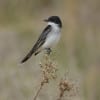 By Jim Stevenson
By Jim Stevenson
We had a great day today in Montana, with Baird’s Sparrows, Sprague’s Pipits, Gray Partridge, McCown’s and Chestnut sided Longspurs and nesting Ferruginous Hawks! Tomorrow we start with an exciting drive for Mountain Plovers!
If you haven’t notified me of your interest in a five-day tour of SE Arizona in mid-August or a four-day hawk, shorebird and songbird migration study on the UTC, please do. I’ll make up the dates this week. No dates or cost yet, as I am just looking for interest.
Today’s gallery is some more primitive songbirds we’ve seen in the Great Plains trip this past week (flycatchers through thrushes). It has much less information than usual but each item asks a question. The answer is at the top of the next page. Have fun!
I am still looking for a chance to get to the Post Office to mail books! My Galveston house is open much of the summer now: $300 weekend and $500/week.
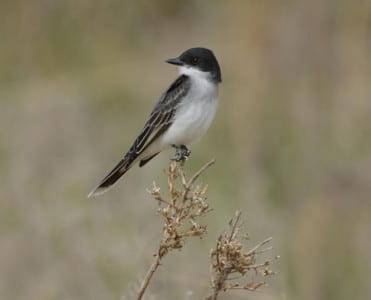
To what family does the Eastern Kingbird belong?
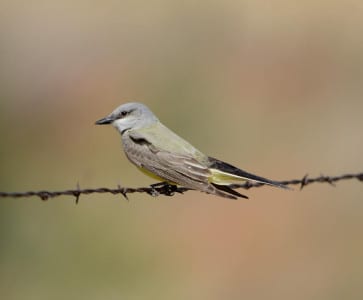
Flycatchers, Tyrannidae. What is the easiest was to tell this Western Kingbird from the other yellow-bellied kingbirds?
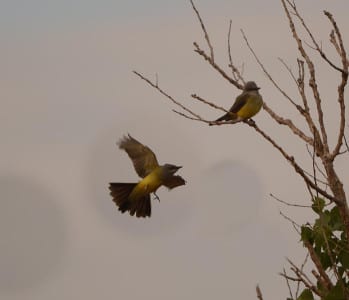
Probably the black tail with white outer retrices (tail feathers).
How are flycatcher and vireo bills similar?
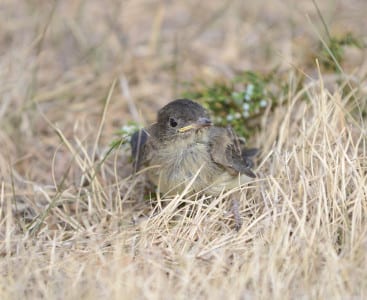
They both have a nail on the tip for “nailing” insects.
This is an Eastern Phoebe baby, nesting in Oklahoma. For you hard core birders, what is
its suborder and how are they different from the rest of the order?
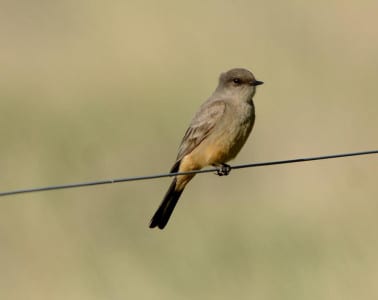
Phoebes and the rest of the flycatchers are Suboscines, separated from the Oscines by the
structure of the syrinx (a great scrabble word).
What is this little brown beast and where do they live?
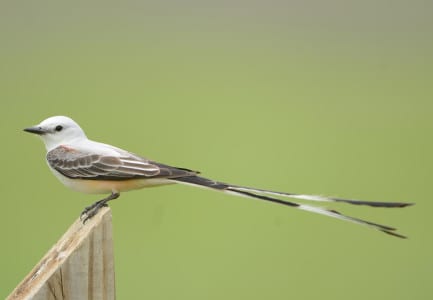
Say’s Phoebe and drier areas of Western North America.
In how many states in the Lower 48 have Scissor-tailed Flycatchers been recorded?
a) Three Great Plains States;
b) Twelve States in the middle of the Country; or,
c) Nearly every State in the Lower 48.
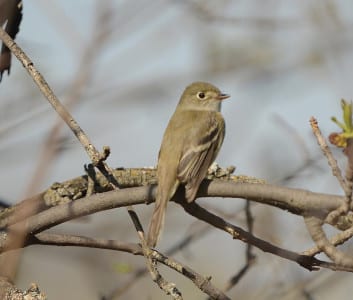
C, and getting close to every one. Bruce?
Which one of the eastern Empidonax f lycatchers is this bird, found nesting in large
numbers in North Dakota?
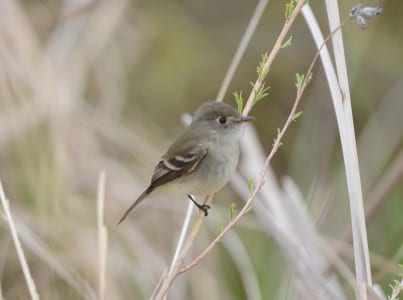
This is the Willow Flycatcher, easily told by call from the Alder Flycatcher that nests
further north.
This little gray guy is the Least Flycatcher, nesting in many of the same forests as the
preceding Willow Flycatcher. Other than the voice, what is the best field mark?
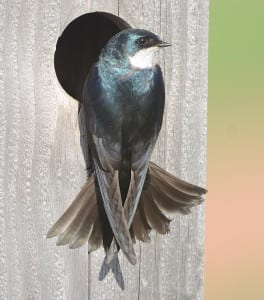
The clumped white at the rear of the eyering. But there are others…
This is a nesting Tree Swallow. Which western swallow is similar but has a white face
and white on the flanks?
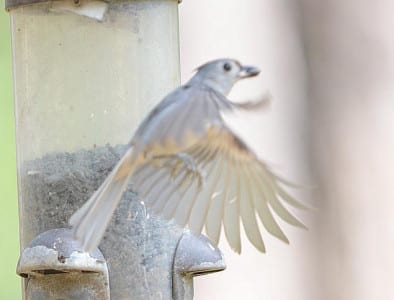
Violet-green Swallow.
This is a Tufted Titmouse where my friend Fred Collins works. What do we call birds
that eat seeds?
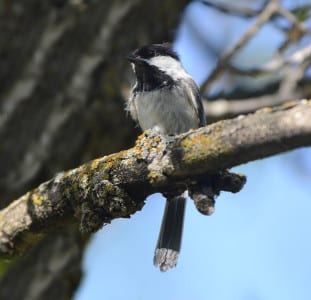
Granivorous. I hope nobody said “seedy.” 😉
What syllable of its name does this bird repeat in its song?
![The last syllable, “dee dee dee.” [This is a Black-capped Chickadee (deedee)]. This is a Philadelphia Vireo, yellower than Warbling and more of an eyestripe. What is the resumed function of the small hook on the bill of a vireo?](https://www.crystalbeachlocalnews.com/wp-content/uploads/2014/06/Songbirds-prim12-374x300.jpg)
The last syllable, “dee dee dee.” [This is a Black-capped Chickadee (deedee)].
This is a Philadelphia Vireo, yellower than Warbling and more of an eyestripe. What is
the resumed function of the small hook on the bill of a vireo?
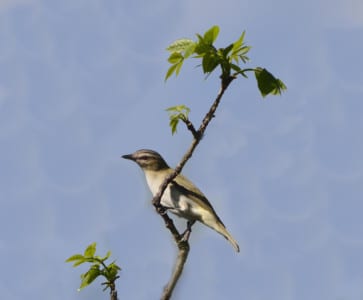
It “grabs” caterpillars and pulls them out of crevices.
What was the worst avian mortality collision on history and how many were these Redeyed
Vireos?
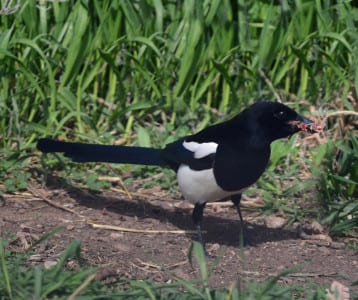
October 10, 1953, over twenty thousand birds perished on the WCTV tower near the
Florida/Georgia Border, and over half were these Red-eyed Vireos.
This is the Black-billed Magpie, carrying food for its little magcookies. What do we call
birds which are found all the way around North America, Europe and Asia?
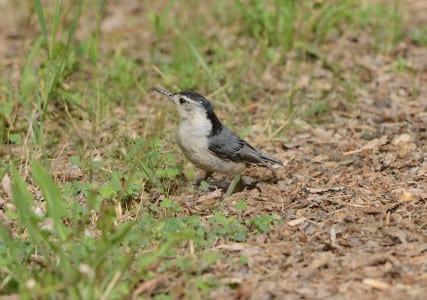
Holarctic.
White-breasted Nuthatches live in both ends of the Country but are missing in much of
the Great Plains. How come?
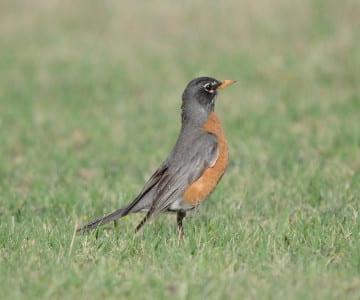
You guessed it! Because of the absence of trees!
This is our American Robin, our largest thrush. In what family is the robin of Europe?
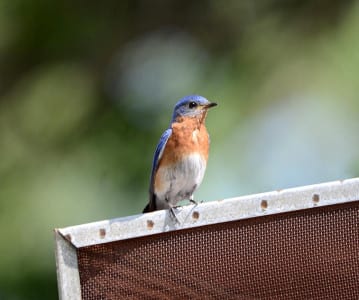
The lovely little robin of Europe is a flycatcher (Muscicapidae, I believe).
True or false: The population of Eastern Bluebirds has dropped significantly in the last
half-century.
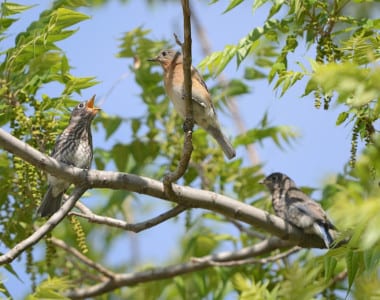
False. It has risen back to healthy numbers with the help of people and nest boxes.
On Vernon Powder’s “form” (farm), Eastern Bluebirds nest. What do adults feed the
young and why?
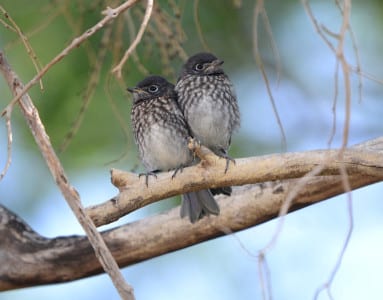
Insects, as baby birds need protein and calcium for growth and development.
What do we call the uncolorful feather coat on many baby birds?
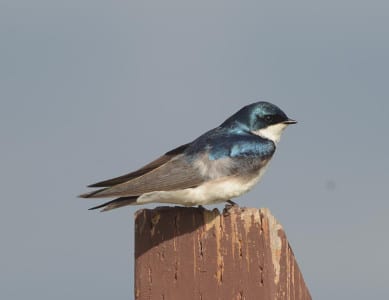
Juvenile plumage.
Tree Swallows nest over much of the Lower 48, opting for boxes rather than the bridges
and overpasses many swallow species prefer. Q- What color are female Tree Swallows?
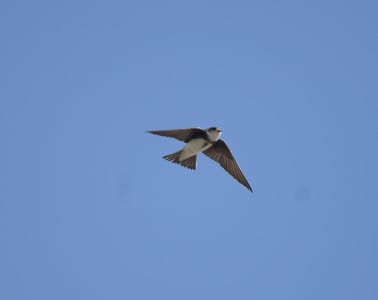
Curiously, female Tree Swallows may be the color of males, or brownish, with sexual
dimorphism unlike most swallows.
Identify this bird and where do they nest?
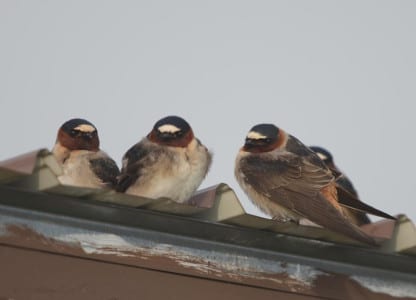
Bank Swallow; and they nest colonially in sheer cliffs of dirt (banks). Chicks are only
susceptible to climbing rat snakes, therefore known as “bank robbers.” 😉
This is a small group of Cliff Swallows. How do you know by their plumage they are not
Cave Swallows?
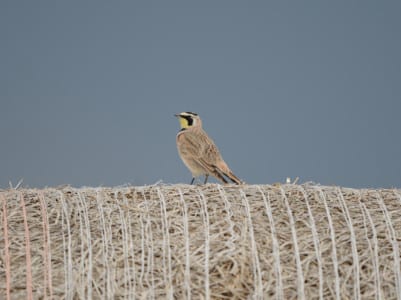
Cave Swallows have dark garnet foreheads, not the light, buffy color.
Why is this Horned Lark singing from this bale of hay?
A. He did it for a lark.
B. Cylindrical objects like bales and fallen trees echo their songs further.
C. Where there are no tall vegetation, bales are the tallest places to sing without the
typical singing from the air larks usually do.
D. Hay has bugs in it the lark can catch.
Answer: C.

 Posted in
Posted in 























